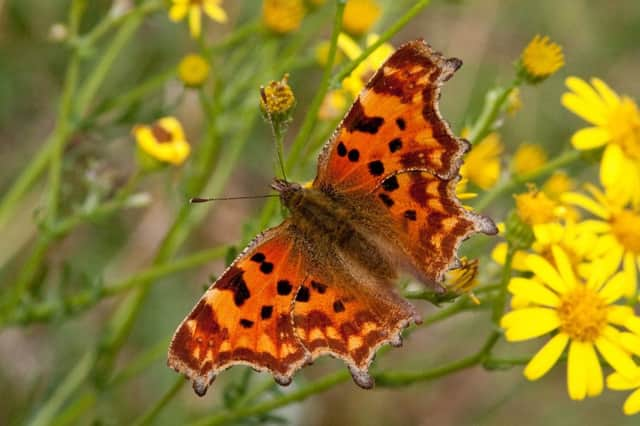Butterfly that vanished from Scotland makes comeback after 150 years


The comma butterfly had for many years become restricted to south-east England and a few counties in the Welsh borders.
Because of climate change however, the insect has been slowly recolonising northwards.
Advertisement
Hide AdAdvertisement
Hide AdRegularly seen throughout the south of Scotland, the species was first recorded as far north as the Highlands in 2004, but in the past 15 years there have only been 23 more confirmed sightings.
Wildlife charity Butterfly Conservation (BC) is now asking nature enthusiasts in the Highlands to record sightings so experts can track its progress.
So far, 78 per cent of Highland comma sightings have been in Badenoch and Strathspey, including Kingussie, Nethy Bridge and Boat of Garten. The butterfly has also been spotted in Mallaig, Fort Augustus, Daviot and Aberlour, while the first sighting this year was recorded in February near Grantown-on-Spey.
Dr Tom Prescott, BC’s Senior Conservation Officer for Scotland, said: “These are likely to be the outliers – the ones that are slightly ahead of the curve.They are trying to establish themselves in the Highlands, although it is taking longer than perhaps we had anticipated.
“It could be that most have been males, which tend to be more mobile than female butterflies – you can have hundreds of males but they cannot establish until the females come and lay eggs.
“At the moment we have had two or three confirmed sightings a year in the Highlands. That’s why we need the help of the public because these distinctive butterflies will turn up in people’s gardens.
“The comma hibernates during the winter and comes out when the weather is warmer, so that’s why we’ve already had a sighting in February. Now that we’ve come into spring, we are hoping to see more adults emerging, so we are asking people to keep an eye out for them in April and May.
“We think climate change is the reason behind this butterfly moving northwards, so we need to keep track of its progress to learn more.”
Advertisement
Hide AdAdvertisement
Hide AdOne of the few butterflies bucking the trend by expanding its range, scientists believe the comma’s “extraordinary” success is due to a combination of climate change and the comma’s increased use of nettle as a caterpillar foodplant.
While other butterfly species have spread from England in to Scotland, the orange and brown-coloured comma is among the most dramatic examples.